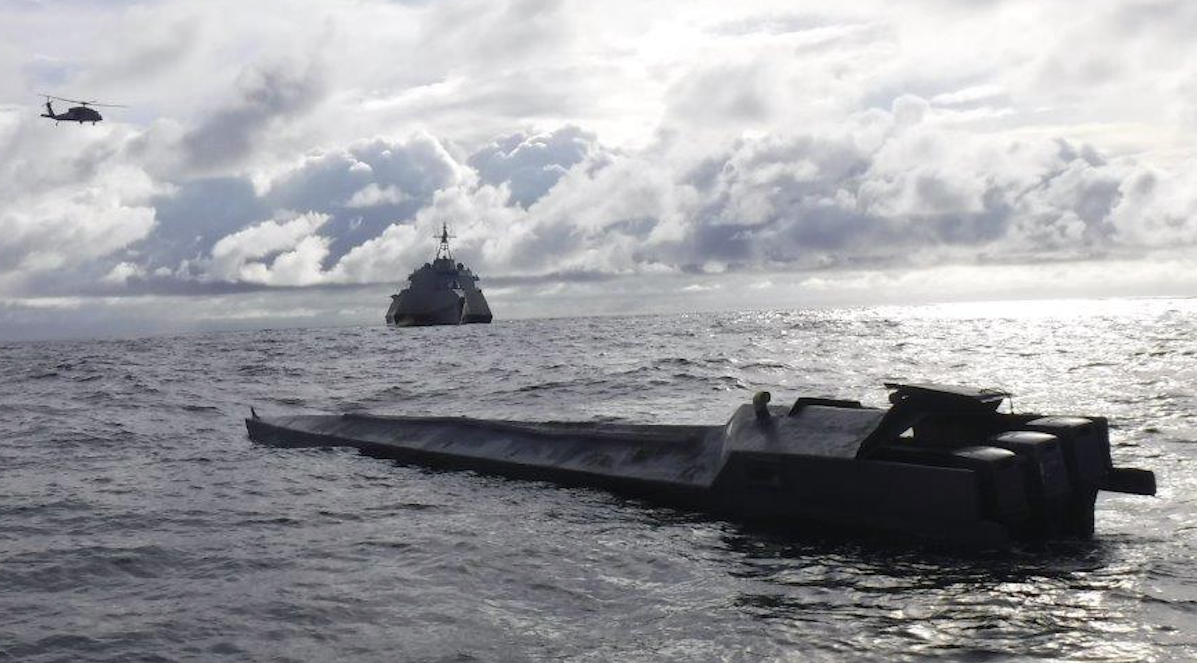
SAN DIEGO – The Marine Corps will soon test a prototype logistics supply drone inspired by drug smuggling narco subs, a service official said Tuesday.
The upcoming month-long Project Convergence drills in California will allow the Marine Corps to test the autonomous low-profile vessel, a potential way for the Marine Corps to perform resupply missions in a wartime scenario when adversaries would seek to cut off sea lines of communication.
“This upcoming Capstone 4 is going to be the first operational [event] in the context of an exercise where we’re going to use it,” Lt. Gen. Karsten Heckl told reporters at the WEST 2024 conference, co-hosted by the U.S. Naval Institute and AFCEA.
Heckl, the deputy commandant for combat development and integration, described the unmanned semi-submersible vessel as “very, very affordable, almost to the point of being attritable.” The service has had the platform for about a year and performed tests, including loading and offloading the prototype from a stern landing vessel and a Spearhead-class expeditionary fast transport ship in the James River in Virginia.
The vessel is modeled after narco submarines used by drug runners, which Heckl noted Joint Interagency Task Force South has trouble tracking in U.S. Southern Command. In a contested logistics environment, the Marine Corps would need assets that could perform the resupply mission without adversary detection, meaning a semi-submersible with minimal wake is an ideal option.
“We just took a page out of the narco drug runners’ playbook,” he said.
The autonomous low-profile vessel can carry two Naval Strike Missiles and fulfills the Marine Corps’ need to focus on lethality in a contested logistics, Heckl said.
“It’s specifically form functioned to meet the cube and weight of two [Naval] Strike Missiles for our NMESIS systems,” he said, referring to the Navy-Marine Expeditionary Ship Interdiction System.
Several years ago, the Marine Corps worked with Raytheon to mount a Naval Strike Missile on a modified unmanned Joint Light Tactical Vehicle chassis, using a Remotely Operated Ground Unit for Expeditionary (ROGUE) Fires as the launcher. Since then, ROGUE NMESIS has emerged as a key part of the Marine Corps’ pursuit of anti-ship weapons capability.
Heckl said a small business built the original vessel prototype, but that the Marine Corps would likely need a larger company to build the vessels if the service wants to buy more.
“You can imagine if these things are inexpensive and we can develop a different variant to do a different kind of logistics mission,” he said. “But right now, again, based on the direction of staying focused on lethality, that’s where we went with this. And it’s working well.”
Project Convergence will kick off Feb. 23 and continue for about a month at the Marine Corps Base Camp Pendleton and the Army’s National Training Center, according to a U.S. Army news release about the exercise. The Army-led exercise will include participation from the Pentagon’s five military services and several allies and partners.





